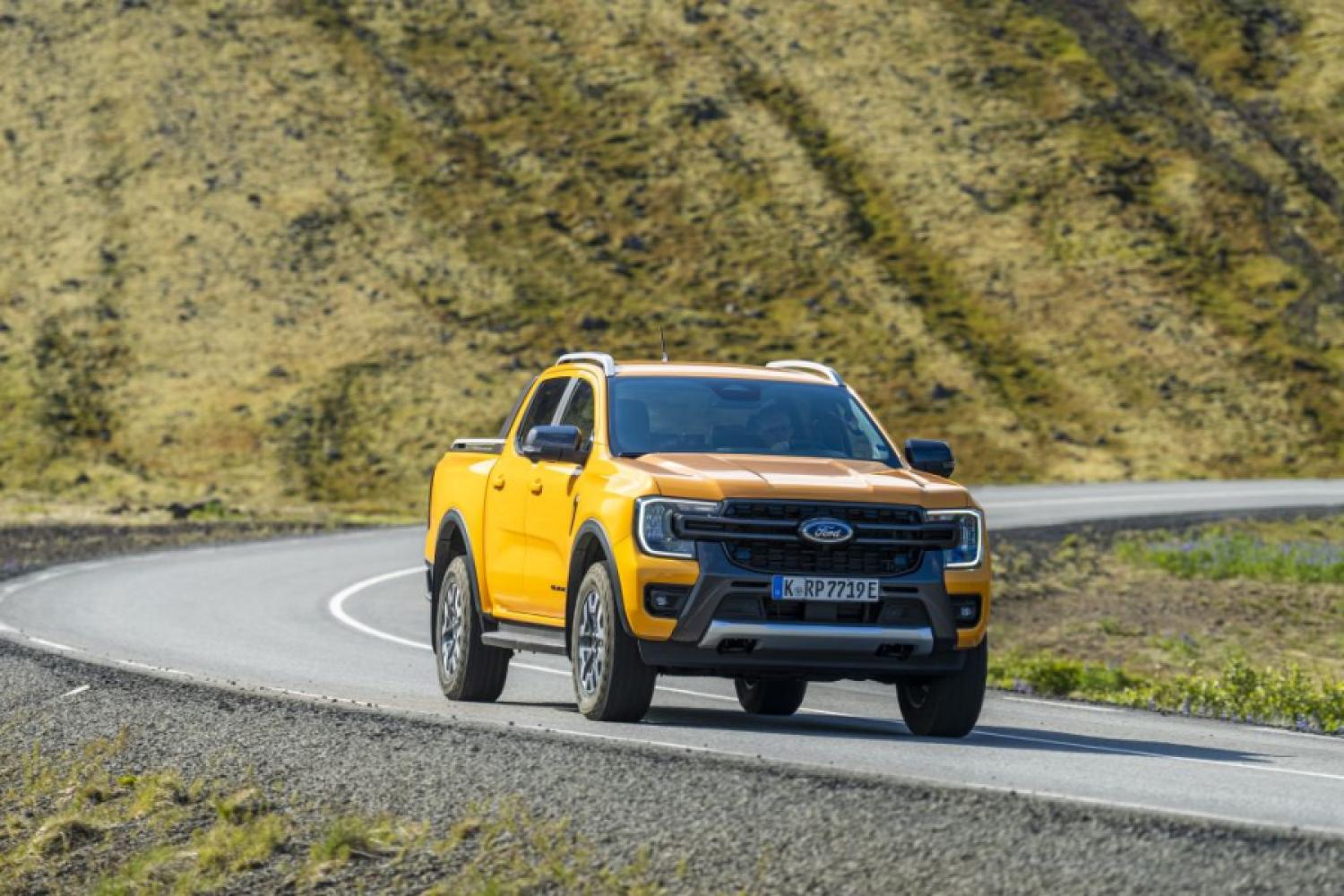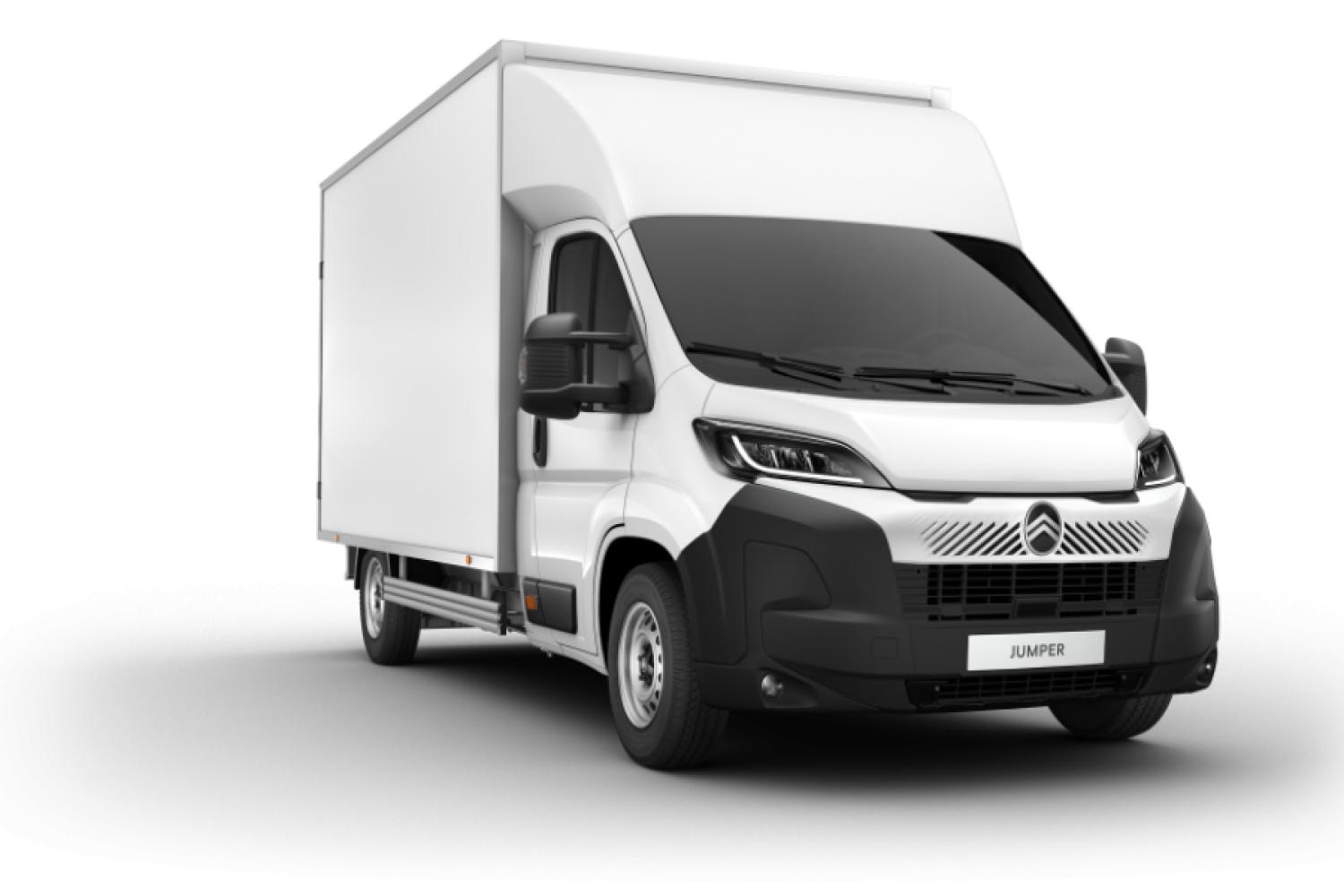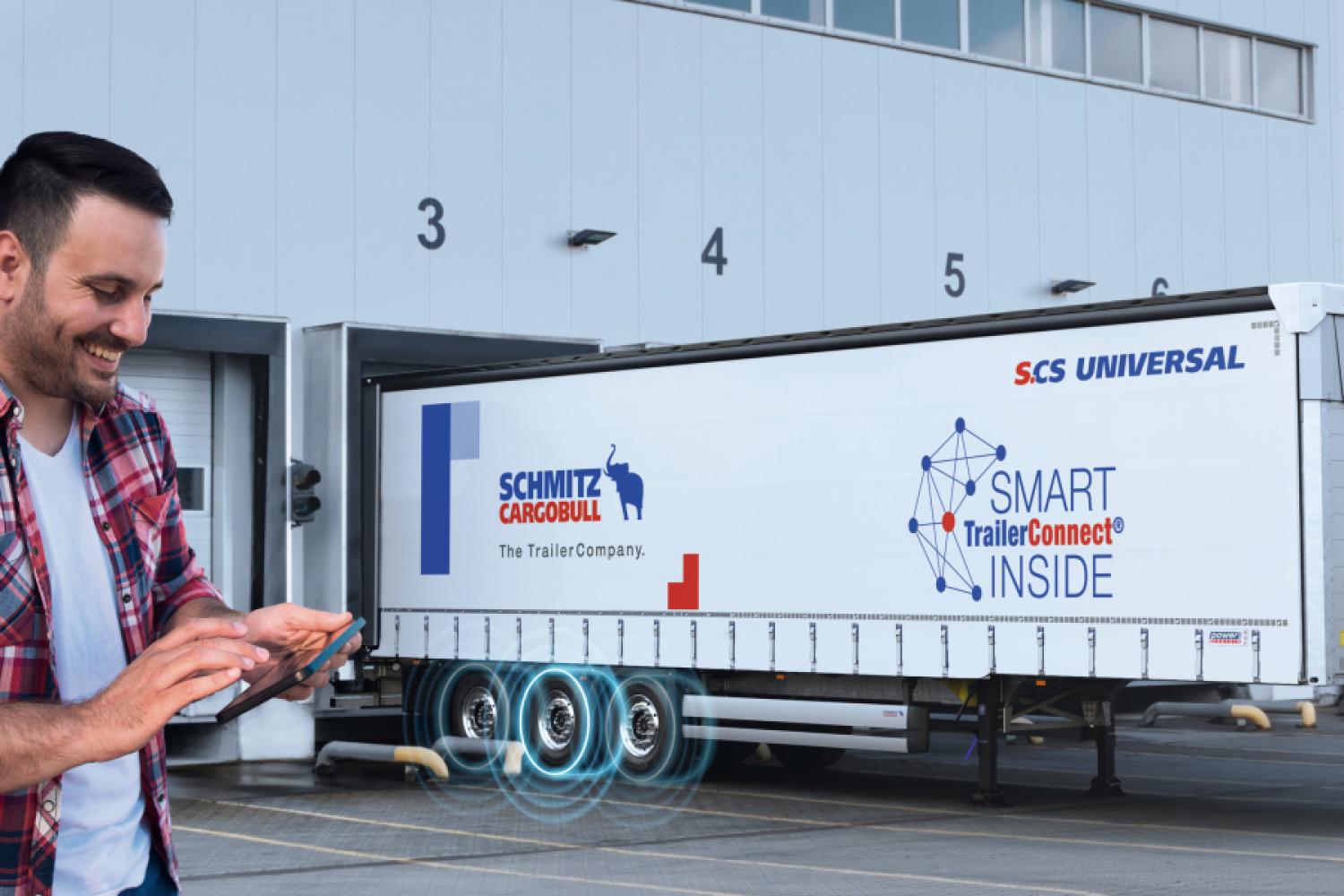Is it still needed? This question spontaneously arises when, in the year 2025, ten years before the hopefully reliably decided EU combustion engine phase-out, one looks at the key data of the new Ford Ranger Plug-in Hybrid. The pickup with the dual heart is supposed to be able to drive 43 kilometers electrically. Manageable, considering that Ford has long since introduced the all-electric and competent pure E-pickup F150 Lightning in the USA, which, despite convincing product features, high performance and range, and spectacular design, generates little traction among customers.
And that hasn't changed since Trump took the helm back to the future and deliberately dries up the already delicate seedling of e-mobility in the USA to the detriment of its own industry and electric pioneers like Ford. Ok, for Europe, the Lightning would be too big, too heavy, too much of everything: 5.90 meters in length, 2 meters in width, 450 hp, 0-100 km/h in 4 seconds, 385 and 514 kilometers of range with a huge 98/131 kWh battery …
Nevertheless: In Europe, new, bold Chinese rivals like Maxus are emerging, having recently introduced a similarly formatted, pure E-pickup for the European market with the eTerron 9. So it almost seems a little "late" what Ford is initiating with the hybrid. However, it does put them ahead of arch-rivals like Toyota, who so far can only offer a mild hybrid of their hardly less legendary Hilux – and prefer fuel cells over batteries for pickups. The Hilux Fuel Cell still takes some more time. Disadvantage of pure BEVs: Especially pickups become incredibly heavy and can hardly transport any cargo within the 3.5-ton limit. In this light, the PHEV makes sense again.
A hybrid to convince e-skeptics
For the time being, Ford wants to entice customers who are still rather skeptical about electric vehicles with "open transporters" with a package that is not meant to imply doing without diesel, but the opposite, as explained by Jim Baumbick, Vice President of Development Ford USA, to VM. The PHEV opens up new possibilities that customers need to get acquainted with. Positioned above the standard diesel but below the top model in terms of price, the Ranger PHEV retains exactly the same characteristics as the diesel model.
In other words: a towing capacity of 3.5 tons is set, a payload of just under a ton too, and the generously and practically designed loading area with an additionally robust easy-lift tailgate of the 5.35-meter vehicle (1.92 m width, 1.87 m height) easily fits a Europallet, with 1.22 m between the wheel arches
and 1.64 m loading length. But on top of that, you add electronic goodies like a so-called Pro Power Onboard Unit, enabling external consumers like tools to be operated optionally with 6.9 kW power (2x3.45 kW) or in the basic version with 2.3 kW. Thus, the Ranger becomes a rolling power bank. People are very creative in using it, as Baumbick reports from experiences with the F150 Hybrid in the USA. For example, for disaster relief or during a power outage at a wedding. It's certainly better and more environmentally friendly than the usual "gas-powered generators," says Baumbick.
However, the possible "consumers" naturally draw from the 11.8 kWh lithium-ion battery, further decreasing the range of not particularly thrilling 43 kilometers electrically. However, Ford says this is more than half of what Ranger customers travel daily, so it's enough. Recharging in AC mode takes four hours at a rather sluggish 3.7 kW. A fast charger is not initially planned.
No compromises, various advantages
Yet the addition of an electric partial drive brings further tangible advantages: The interaction from the globally used 2.3-liter four-cylinder turbo gasoline engine, 75 kW E-motor with 300 Nm, and a 10-speed hybrid transmission culminating in 697 Nm and 207 kW system output provides an easy start from a standstill – and the possibility to use the powerful curb weight of 2.5 tons for recuperation while coasting downhill or rolling to a stop. This additionally spares the brakes – and as usual for electric vehicles, it drives very pleasantly and smoothly.
Especially off-road, the E-motor undoubtedly has its charm as a generator. An electronically controlled clutch mechanism regulates, depending on the selected driving program, the power transmission from the combustion and electric motors – thus optimizing drive efficiency as well as the available torque, as Ford engineers outline. More than dry theory: because it positively impacts situations like trailer towing or off-road driving.
This new form of power transmission also simply improves the ride smoothness and driving comfort. The transitions between the different drive types occur as promised quite seamlessly. If the start-stop system temporarily turns off the gasoline engine at a red light or in stop-and-go traffic, the standard two-zone air conditioning continues running electrically.
Under power: superior to diesel off-road
Off-road, the e-4WD all-wheel system of the Ranger Plug-in Hybrid can automatically send the torque of the gasoline, electric, or hybrid drive to all four wheels in tricky driving situations. Precisely dosed, one can creep fully electric and magically silent through off-road terrain because the drive train makes no difference whether the power
comes from the e-machine or the combustion engine – as long as there's juice in the battery, electricity takes precedence. Additionally, a transfer case with reduction and a locking differential on the rear axle support the propulsion. The driving modes Normal, Eco, Sport, Slippery, Tow/Haul, Mud/Ruts, and Sand are available. With them, the torque distribution can be adjusted to the respective conditions.
As usual, one can also choose whether the e-drive runs automatically, immediately, later, or whether the gasoline engine, energetically questionable, should charge the battery during the drive. It's pretty sophisticated, all of it, and the plug-in hybrid makes the "good old diesel" look downright old. And sound old: Because not least due to the use of Active Noise Cancelling technology, the PHEV is quite a quiet drive, especially for a rather rustic vehicle like a pickup.
Smoother progress
The same applies to the driving characteristics of the traditionally rigid rear axle and therefore typically "rigid" and by design "stiff-hipped" steel frame transporter, for which the setup was adjusted for the PHEV, allowing handling and comfort at diesel level. There's no question that Ford has also transferred the driver assistance from the diesel and the PHEV doesn't fall short with standard Pre-Collision Assist, active lane keeping pilot, and rear-view camera. An intelligent distance cruise control mustn’t be missing either. In steep terrains, front and rear cameras, which provide visibility where one's view ends, prove very helpful.
Modern times also prevail when it comes to trailer operation: Thanks to Trailer Reverse Assist, the combination can be maneuvered over a dial on the center console and the 12-inch central screen. The Ranger PHEV even had no problems with the test-driven two-ton tandem axle trailer. Thanks to large mirrors, maneuvering is also easy without assistance.
Solid equipment
Overall, the interior is modern: Of course, even in the basic XLT model, it includes the increasingly better-operable SYNC-4 infotainment system, an 8-inch digital display, and an inductive charging cradle for phones. The Wildtrak adds more to optics and equipment, such as a 360-degree ambient light for working on the vehicle in the dark. The Stormtrak includes a powerful B&O sound system with ten speakers, matrix LED lights, and a standard 2.3 kW onboard charger, as well as a sports bar over the bed. Ford's mastery with pickups traditionally lies in high customization options through accessories, from cargo area cover and canopy, to bike racks or roof tents.
Lower costs: saving with electricity
Last but not least: Ford also calculates lower operating costs for the PHEV, compared to the 3.0-liter V6 top
diesel, which is about comparable in performance and price: With a driving distance of 80 kilometers daily and commercial power supply, an annual saving of a good 1,000 euros is expected. Also, because in daily use, energy consumption is supposed to be lower than that of the diesel, the range thanks to an 80-liter tank equivalent, about 600 kilometers is displayed at the start of the ride. In the not quite reality-based WLTP, they report a "sparrow thirst" of 3.1 l/100 km for a 2.5-ton vehicle. We can achieve that over 50 kilometers if the battery is full. However, after that, consumption continuously increases, especially when the EV Charge mode is activated. With almost 8 l/100 km, one must expect as gasoline operation increases, which the diesel also consumes.
"The Ranger Plug-in Hybrid can do everything any Ranger can. Additionally, thanks to its versatile electric drive, it offers more torque than ever and further benefits like locally emissions-free driving and charging electrical devices even in remote locations," advertises Hans Schep, Managing Director Ford Pro Europe.
Developed and marketed over his unit as the clear leading pickup with over 40 percent market share in Europe. The Ranger has now been leading the field for ten consecutive years, reaching over 50 percent in markets like Germany and the UK.
Who needs a pickup? The "work-and-play" clientele
The big question is, of course, who are the pickup users in the first place: Before developing the latest Ranger generation, Ford surveyed more than 5,000 customers. Accordingly, many Ranger buyers use their vehicle professionally for their business during the week and as a private vehicle on the weekend, which the equipment lines are supposed to reflect. Hans Schep calls it "work and play." Many small businesses, with high demands on a "workhorse."
And for the professional sector of the Cologne-based company, it's naturally understood that flexible financing, charging solutions, or telematics and software services are also available. One can hardly build a better bridge. Until there's a completely electric Ranger, which Jim Baumbick also considers realistic for Europe. For the moment, however, he sees the PHEV as a suitable solution that hits the "sweet spot" between the required payload and emission reduction. Let's see if the customers see it that way too. What is supposed to convince them is the fair pricing: With the rather simple XLT line, the plug-in hybrid costs 53,180 euros, in the flashier Wildtrak version then 62,225 euros, 4,500 euros cheaper than the V6 diesel Ranger at 66,990 euros. If that's not an argument to leave the diesel






